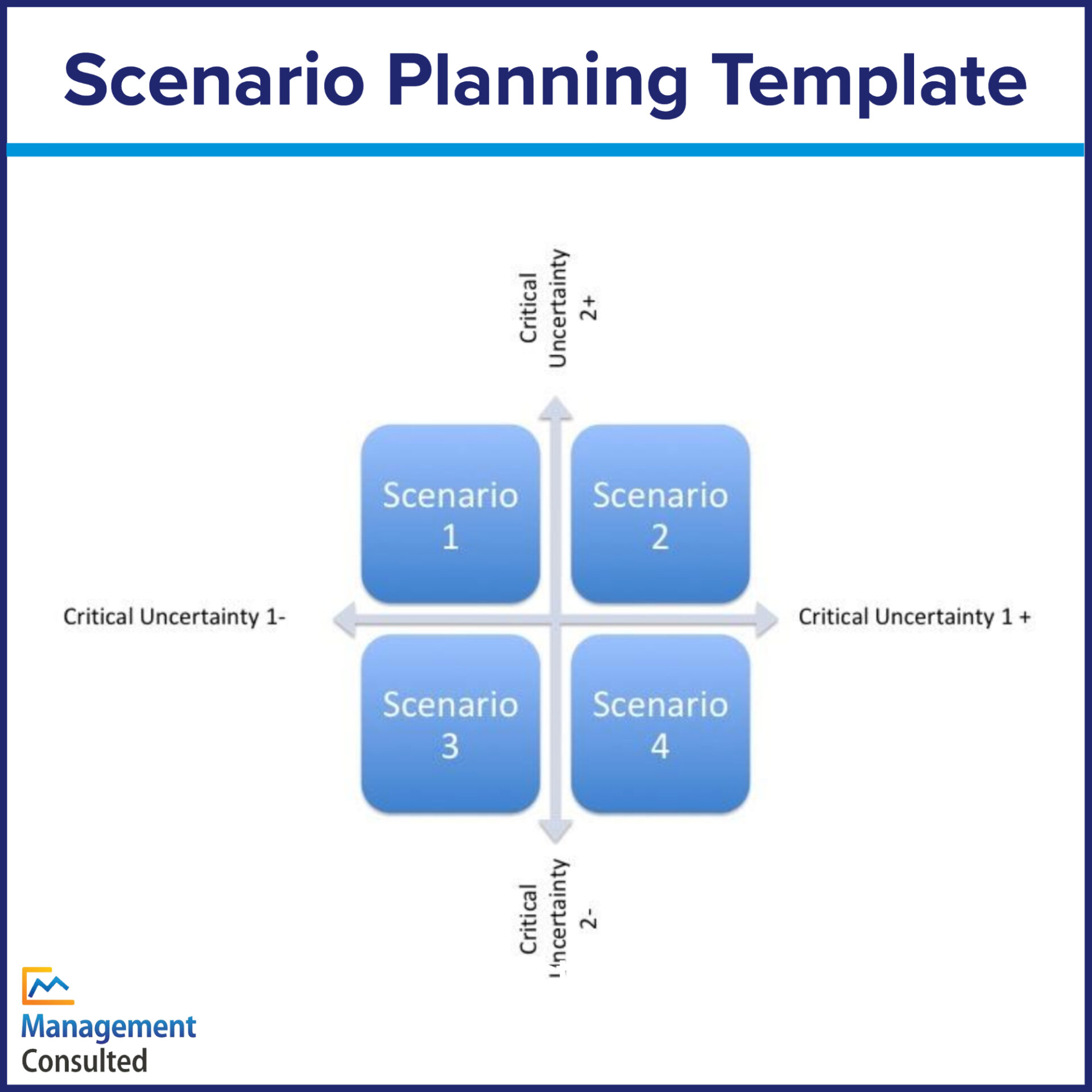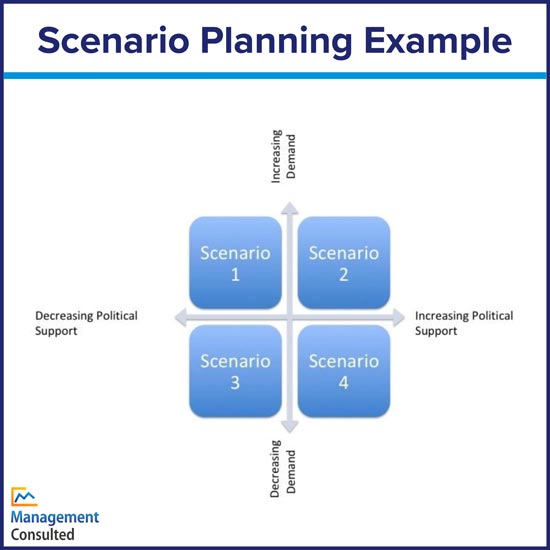Scenario planning is one of the most powerful tools businesses can use to strategize for the future. And of course, planning is one of the most important and difficult aspects of running a business. Anyone can tell you how a business ought to respond to conditions as they are at present, or as they were at some point in the past. However, the future is utterly uncertain except for the guarantee that it will be different from the present. This is where scenario planning helps offer you an advantage.
In this article we’ll walk you through the managerial time-travel that is scenario planning. We’ll help you understand how it functions, what it’s for, and what its limitations are (there are both advantages and disadvantages of scenario planning). We’ll also give you an example of how a hypothetical business might use scenario planning to help prepare for the years ahead. By reviewing an example of scenario planning along with a generic scenario planning template, you should be much better grounded in how scenario planning is used.

What Is Scenario Planning?
Although we have already used the term several times, you may still be wondering, what is scenario planning? Don’t worry. It sounds self-explanatory until you realize just how vague the term is. In its most basic sense, scenario planning refers to a form of strategic planning that helps companies envision possible future scenarios and build flexible long-term strategies to be prepared for what lies ahead. Scenario planning was originally developed as a tool for military intelligence, but its application has been useful in many other fields, especially management.
The essence of scenario planning is the identification of uncertainty and the preparation for it. These uncertainties about the future will dictate the most powerful conditions to which companies will have to respond—and by which their success or failure will be determined.
[optin-monster slug="oa6kdflxsmp4bi4azzgi" followrules="true"]
There are four primary steps in the process of scenario planning.
- Identify the main driving forces affecting the broader situation in which a business operates. This will include environmental factors including shifts in society, the economy, technology, politics, and more.
- Identify the critical uncertainties. This consists of picking the most relevant and powerful of the driving forces you identified in step one. Which of these will have the most impact on your business in the long run?
- Develop a range of likely scenarios related to those two critical uncertainties. One easy way to do this is to arrange the two uncertainties as the two axes in a single matrix, and to assess each quadrant as its own possible scenario.
- Discuss the implications and impacts of each scenario. What will each one mean for how your business operates, what it needs to succeed, and what obstacles or opportunities will it face? How will the business’s strategies and goals need to evolve in each scenario?
Advantages and Disadvantages of Scenario Planning
There are both advantages and disadvantages of scenario planning as a strategic technology. The advantages may seem obvious. Scenario planning enables you to prepare now for changes that will come down the road. This will help preemptively neutralize obstacles and enlarge opportunities.
The disadvantages of scenario planning have mainly to do with mistakes in how it’s applied. For one thing, opening up a long-term conversation about the future can lead to a kind of paralysis if too many different scenarios are considered. This is why narrowing down your scenarios to four is important. Further, all scenario planning is necessarily influenced by the present, which must be borne in mind—current trends are likely to change, and an over reliance on scenario planning can lead to overconfidence & stagnation.
Scenario Planning Template
You can use the following scenario planning template to construct a matrix of possible scenarios.

As you can see, both the x- and y-axes delineate different critical uncertainties, which are derived from the list of driving forces affecting the future of business operations. Each quadrant reflects a different combination of those two uncertainties, each commanding its own appropriate strategy.
Scenario Planning Example
The template is simple enough, but you might not appreciate the power of scenario planning until you see a scenario planning example played out. Let’s say the company you run installs solar panels. After looking at the main driving forces having an impact on your business, you realize the most important uncertainties about the future are political support/headwinds and consumer demand.

Scenario 1
Demand is up, but political support is down. This means subsidies are likely to be rolled back, as will government funding for research & development. Companies will have to fund their own R&D, and they will have to find ways to increase efficiency so they can lower costs, so that consumers will be able to afford their products.
Scenario 2
Political support and demand are both up. This means the government is likely to be funding R&D and subsidizing consumer sales. The health of the industry will mean a rise in competition—putting pressure on companies to increase the scale of production in order to compete.
Scenario 3
Political support and demand are both down. Companies may need to enlist the help of lobbyists and marketing specialists in order to rally consumer & political attitudes. Further, companies will be forced to do everything possible to cut extra costs. Increasing profit margins on each unit sold will be essential since the number of units sold will be going down.
Scenario 4
Political support is up but consumer demand is down. This may mean the market has become oversaturated. If there are no gains to be made through marketing & advertisement, companies will have to innovate on the product side. It may become more important to increase the efficiency of the panels, or to enhance their appeal in some other way. Or else companies may have to offer new products in addition to solar panels, such as rooftop wind turbines.
Conclusion
Even if you had all the information in the world about the present state of the market, that wouldn’t necessarily guarantee you future success. Running a business into the future depends on the ability to remain flexible and adaptive, but of course this is enhanced by strong foresight. Scenario planning helps companies anticipate the kinds of future transformations that, if unplanned for, can prove catastrophic for individual companies and even whole industries. The larger and more successful a company is, sometimes, the harder it is for that company to change. That’s why scenario planning is essential. It helps filter the many uncertainties of the future into a discrete series of plausible outcomes.
Additional Reading: